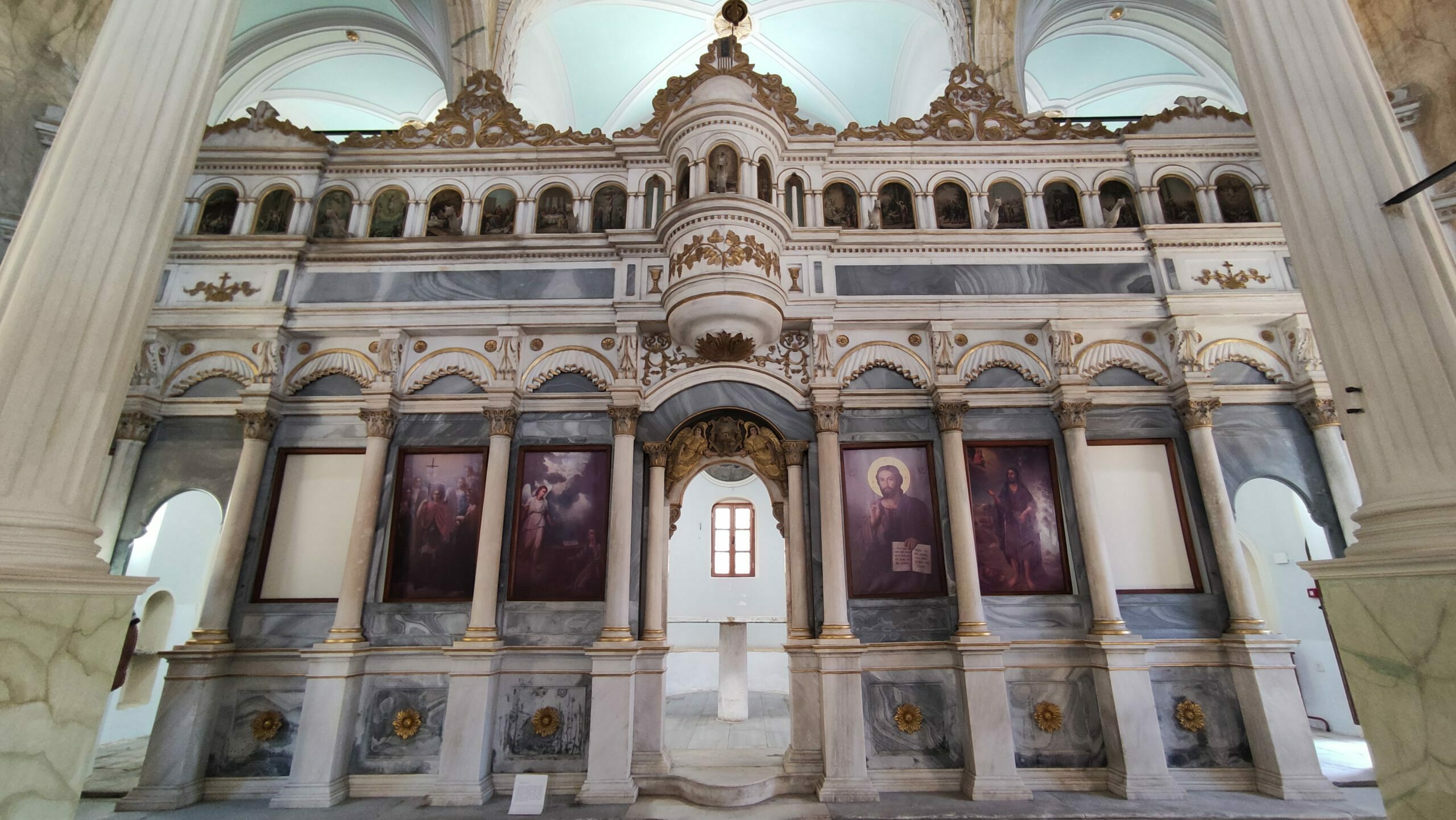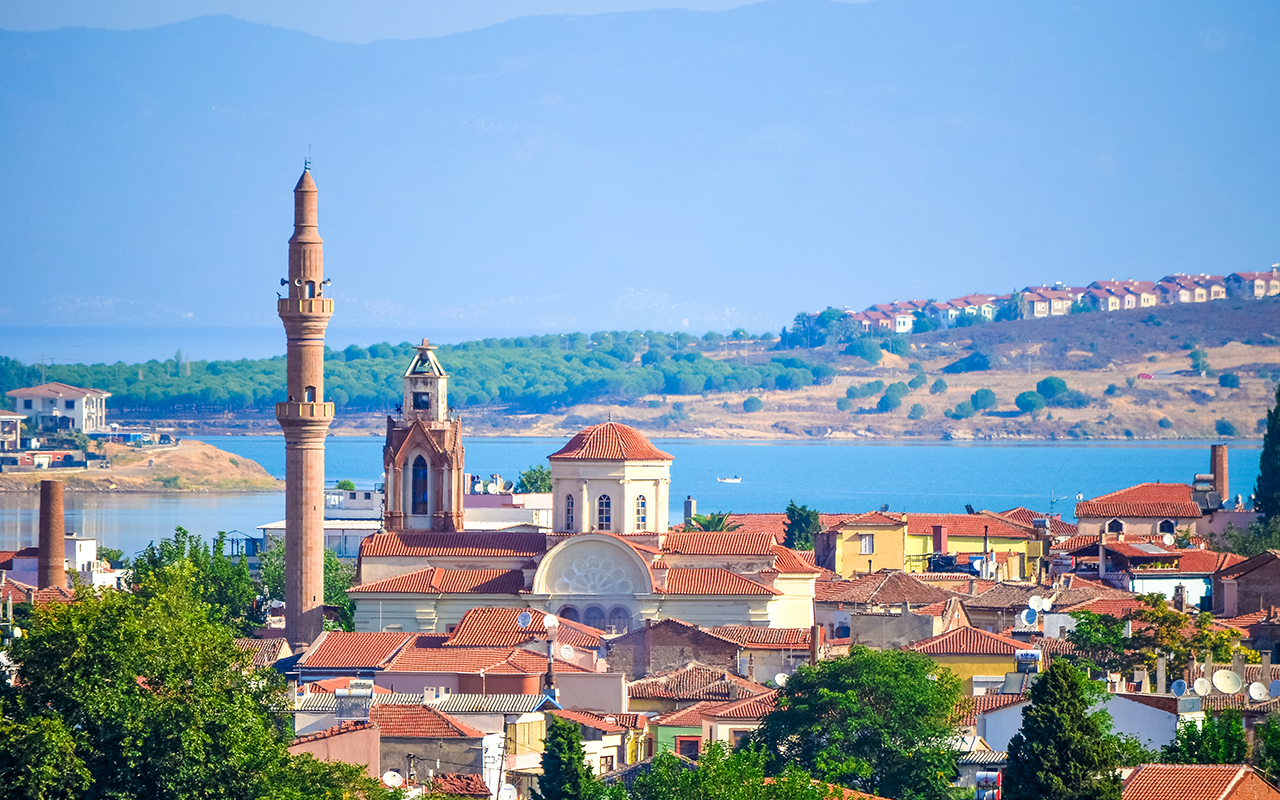When you think of Ayvalık, does a deep blue sea and the long, sandy stretch of Sarımsaklı Beach first come to mind? What if I told you that in the heart of this coastal town, a completely different world is hidden, one that will take you on a journey through time? If a holiday for you is more than just sunbathing, then you must add exploring the historic streets that reflect the town's soul to the very top of your list of things to do in Ayvalık. The rhythm of the cobblestones under your feet, the whispers of the bay-windowed houses shaded by bougainvillea, and the scent of iodine wafting from the narrow streets... This is the deeper, more unforgettable experience Ayvalık offers you.
Wander Among Old Greek Houses and Churches (e.g., Saatli Cami)

The moment you step into the center of Ayvalık, you find yourself in what feels like an open-air museum. The buildings here are not just stone and mortar; they are the silent witnesses of 19th-century Turkish-Greek life, the population exchange, and the transformation of a culture. As you walk the streets, the first thing that will catch your eye is the famous Sarımsak stone, which gives the buildings their unique pink hue. Extracted from ancient quarries in Badavut, this volcanic stone is not just an aesthetic choice but also an example of architectural genius. Its easily workable nature and natural insulation properties keep the buildings cool in the summer and warm in the winter.
Get ready to lose yourself in the details of these stone houses. The ground floors are made of stone, while the upper floors are brick, and the wooden, double-winged doors with their monumental knockers greet you. On the iron transoms above many doors, you can see the construction date of the building, allowing you to picture that moment in your mind. This consistent architectural language has spread throughout the town, from churches to houses, from olive oil factories to warehouses, giving Ayvalık its cohesive and enchanting identity.
One of the most symbolic structures of this historical fabric is undoubtedly the Saatli Cami (Clock Tower Mosque). Originally named Agios Ioannis Church, this structure was a magnificent Greek Orthodox church built in the 1870s. After the population exchange in 1928, it was converted into a mosque to meet the worship needs of the newly settled population. This transformation is a story of adaptation rather than destruction. When you enter, you are still greeted by Corinthian-style column capitals and a U shaped gallery floor. The church's religious depictions and icons were not destroyed but were carefully covered with plaster, as if placed in a time capsule. The story of how the building got its current name is quite touching. When the bell tower was damaged in the great earthquake of 1944, a clock was added to the repaired tower, and from that day on, the structure became known among the people as Saatli Cami. If you want to understand this layered history of Ayvalık more deeply, you can also check out our Things to Do in Balıkesir guide.).
Visit the Taksiyarhis Memorial Museum

The Taksiyarhis Church, which you reach by passing through narrow streets in the area known as Ayvalık's first neighborhood, is one of the town's most important cultural treasures. This structure, whose roots date back to the 15th century and is Ayvalık's first church, took its present form with its reconstruction in 1844. However, the fate of this magnificent building changed completely with the population exchange. Having lost its congregation, the church was used as a state-owned warehouse for many years. During this period, it suffered damage from both earthquakes and treasure hunters.
Fortunately, this sad wait ended with the restoration initiated by the Ministry of Culture and Tourism in 2012, and the building reopened its doors in 2013 as the Taksiyarhis Memorial Museum. The journey of this church is a living example of how cultural heritage can be abandoned and then brought back to the community.
Don't be fooled by the museum's modest Sarımsak stone facade. The moment you step through the door, a completely different world greets you. The splendor of the interior, with its gold-leaf decorations, marble craftsmanship, and religious frescoes covering the ceiling, is literally breathtaking. The marble iconostasis (the section containing sacred items) adorned with scenes from the life of Jesus Christ and the rare portraits of female saints painted on fish skin particularly fascinate visitors. This is not just a museum, but a sacred space where the spiritual and artistic memory of Ayvalık is preserved.
Stroll Through Charming Art Galleries and Antique Shops

The historic streets of Ayvalık are not just a frozen-in-time backdrop; on the contrary, they are places where a vibrant life flows and creativity blossoms today. The Macaron neighborhood, in particular, is where the heart of this energy beats. Old Greek mansions now host artists' studios, tasteful boutiques, antique shops, and bohemian cafes. Wandering aimlessly in this neighborhood can create one of the most enjoyable memories of your Ayvalık holiday.
You can trace the past in an antique shop you'll encounter at every corner, and perhaps find a unique piece to take home. You won't notice how time flies in shops like Antique Paliacis or at the Ayvalık Antique Dealers' Bazaar. If you're interested in art, places like the Spanish Atelier, where you can find ceramics by a Spanish artist, or Arkipel, which offers art supplies and unique gifts, are just for you.
When you get tired during this discovery tour, you can sip your coffee at an antique-cafe like Kaşmira Cafe, surrounded by hundreds of lived experiences. In Ayvalık, art and history feed each other to create this unique texture. The settlement of artists and craftsmen in these historic buildings not only adds a new spirit to the region but also provides a great motivation for the preservation of this priceless architectural heritage. To discover all the beauties of Ayvalık, you can check out our Ayvalık Tourspage.
Conclusion: There's More to Ayvalık Than Just its Center!
Don't think your adventure is over after you've turned the dusty pages of history on the cobblestone streets of Ayvalık! This tour is actually just the beginning of a much larger discovery.
Cunda (Alibey) Island: This charming island right across from Ayvalık awaits you with its unique stone houses, the famous Rahmi Koç Museum, Lovers' Hill (Aşıklar Tepesi), and fish restaurants lined up along the coast.
Şeytan Sofrası (Devil's Table): A place you must go, especially to watch the sunset. The view from this hill, which lays the Ayvalık islands and even Lesbos at your feet, will be etched in your memory.
Sarımsaklı Beach: If you want to surrender yourself to the cool waters of the Aegean after a day full of history and culture, the fine sands of the world-famous Sarımsaklı Beach will be waiting for you.
Source: For more official information about the Taksiyarhis Memorial Museum and to check visiting hours, you can visit the relevant page of the T.R. Ministry of Culture and Tourism: ((https://muze.gov.tr/muze-detay?sectionId=TAM01&distId=MRK))
Frequently Asked Questions (FAQ)
1. How do you get to Ayvalık? You can easily reach Ayvalık by road via İzmir, Balıkesir, or Çanakkale. If you prefer to fly, you can use the nearest airport, Edremit Koca Seyit Airport (approx. 44 km), or the slightly more distant İzmir Adnan Menderes Airport (approx. 163 km).
2. What is Ayvalık famous for? Besides its historic Greek houses and streets, Ayvalık is known for its world-famous olives and olive oil. It is also famous for delicacies such as Papalina fish (best season is August), which is only found in this region, the local lor cheese dessert, lor cookies, and refreshing koruk (unripe grape) juice.
3. What is the best time to visit Ayvalık? The best times to visit Ayvalık are in the spring (April-May) and autumn (September-October), when the weather is not oppressively hot and the crowds are smaller. These periods are perfect for exploring the historic streets on foot. If you are coming for a beach holiday, the summer months can be preferred, but keep in mind that it will be very crowded.


 English
English Türkçe
Türkçe